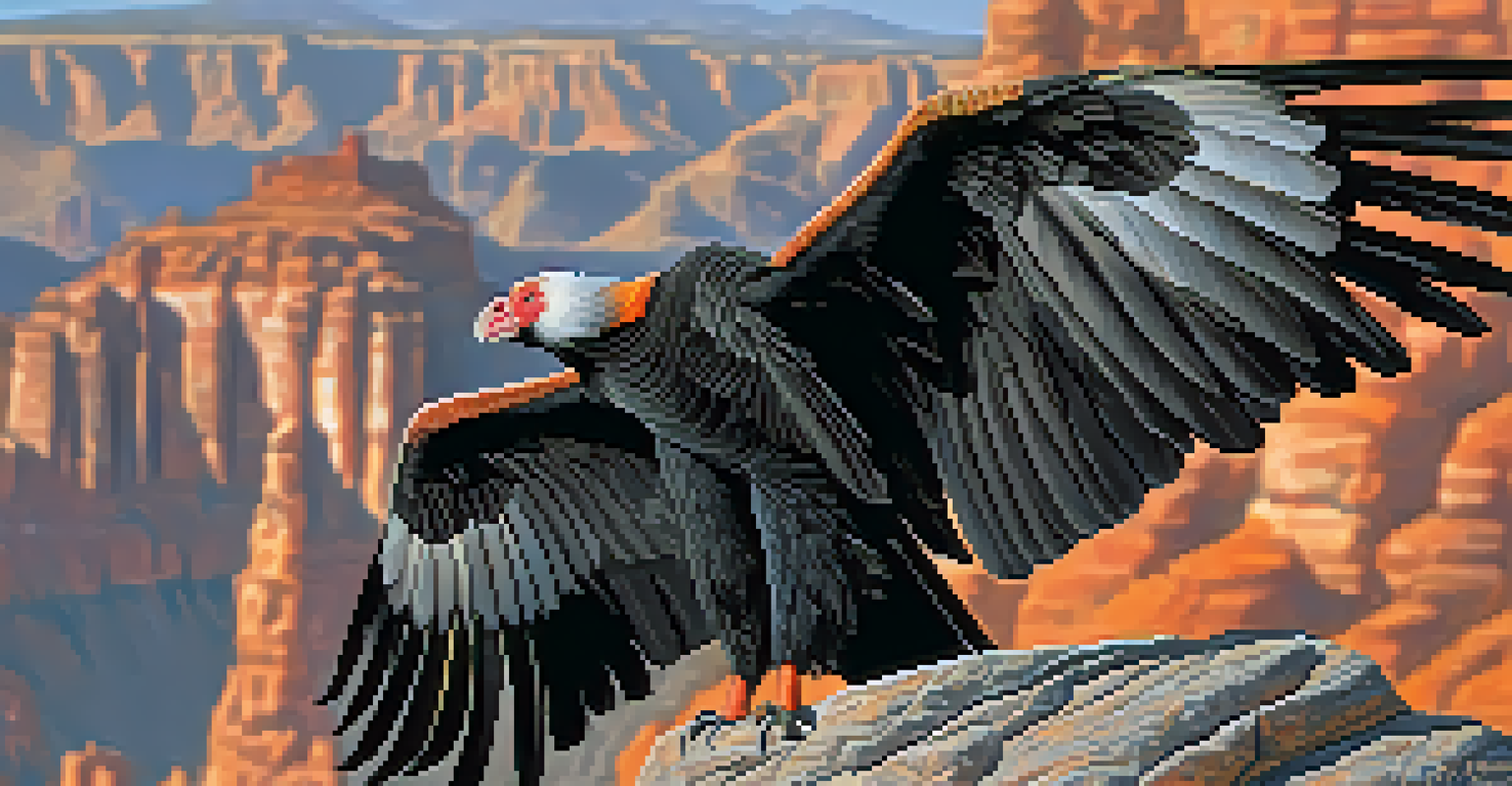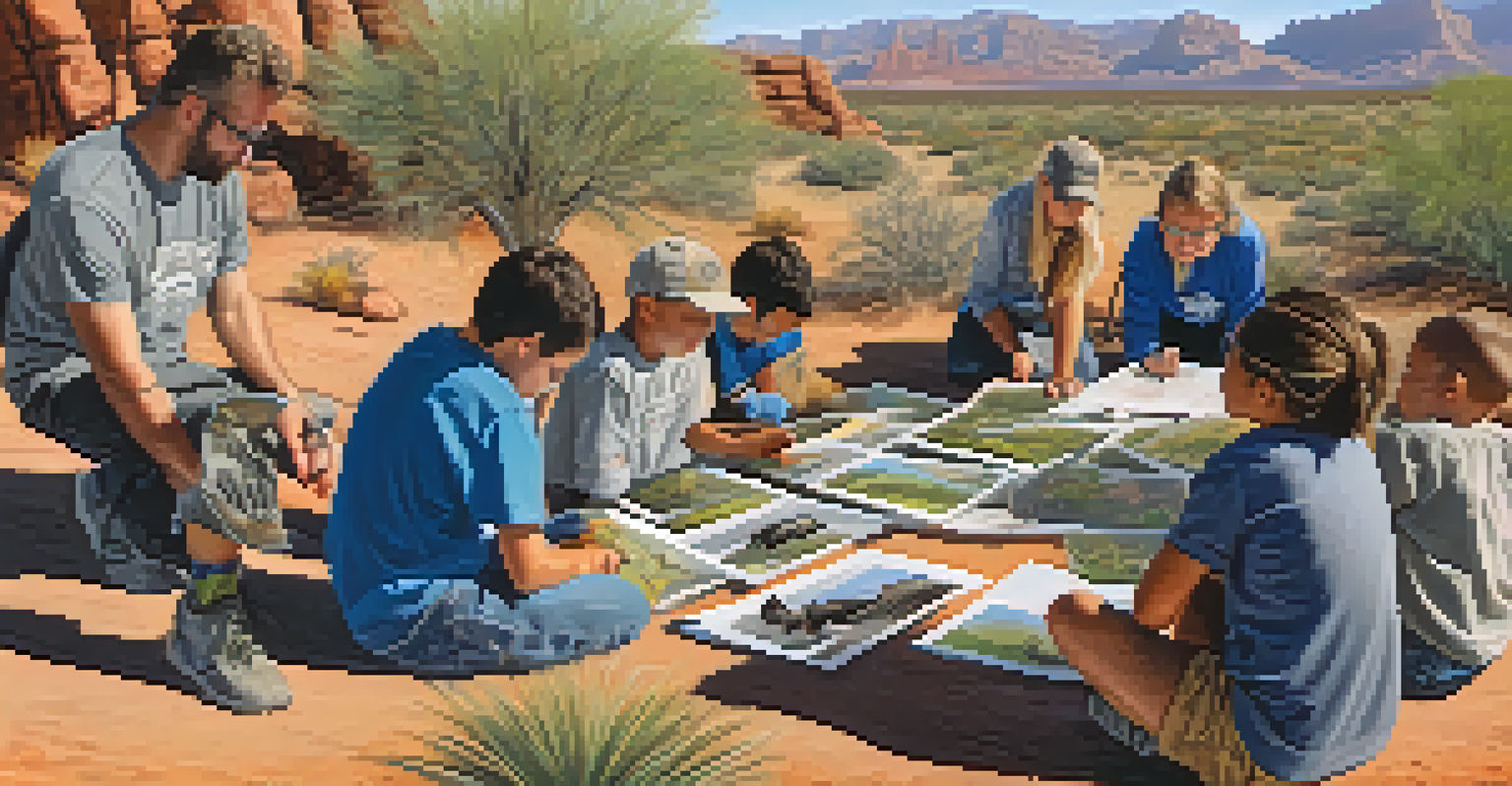The Role of Arizona in Endangered Species Research

Arizona's Unique Biodiversity and Ecosystems
Arizona is known for its incredible biodiversity, boasting a range of habitats from deserts to forests. This variety creates a unique environment that supports numerous plant and animal species, some of which are endangered. The state's unique ecosystems, like the Sonoran Desert and the Colorado Plateau, provide essential resources that make them hotspots for conservation efforts.
The environment is where we all meet; where we all have a mutual interest; it is the one thing all of us share.
The diverse climates and geographical features of Arizona allow for an array of species to thrive. However, this biodiversity is at risk due to factors such as urban development, climate change, and habitat destruction. Understanding the specific ecosystems in Arizona is crucial for identifying which species are most at risk and need immediate attention.
Researchers and conservationists often gather in Arizona to study these ecosystems, making it a critical hub for endangered species research. By focusing on the unique challenges faced by local species, scientists can develop effective strategies to protect them and their habitats.
Key Endangered Species in Arizona
Arizona is home to many endangered species, including the California condor and the Sonoran desert tortoise. These species serve as indicators of the overall health of their ecosystems, making their protection vital for both biodiversity and environmental stability. Understanding the needs of these species helps researchers prioritize conservation efforts.

The California condor, for example, faced near extinction in the 1980s, prompting a significant recovery program in Arizona. Conservationists have worked tirelessly to reintroduce these majestic birds into their natural habitat, emphasizing the importance of habitat restoration and community involvement.
Arizona's Biodiversity at Risk
The diverse ecosystems in Arizona are home to many endangered species, threatened by urban development and climate change.
Similarly, the Sonoran desert tortoise is a unique species that requires specific environmental conditions to survive. This highlights the need for ongoing research and monitoring to ensure that their habitats remain protected, demonstrating Arizona's crucial role in species recovery efforts.
Collaborative Conservation Efforts
Arizona's approach to endangered species research often involves collaboration between government agencies, non-profits, and local communities. These partnerships are essential for pooling resources, sharing knowledge, and maximizing the impact of conservation efforts. For instance, the Arizona Game and Fish Department works closely with organizations like the U.S. Fish and Wildlife Service to implement effective recovery plans.
In every walk with nature one receives far more than he seeks.
Community involvement also plays a significant role in conservation initiatives. Local volunteers often participate in habitat restoration projects, wildlife monitoring, and educational programs that raise awareness about the importance of protecting endangered species. This grassroots approach not only enhances research efforts but also fosters a sense of stewardship among residents.
By building a collaborative framework, Arizona sets an example for other states facing similar challenges. The success of these partnerships demonstrates that protecting endangered species requires a collective effort, combining scientific research with community engagement.
Research Facilities and Organizations in Arizona
Arizona is home to several prominent research facilities and organizations dedicated to studying endangered species. Institutions like the Arizona-Sonora Desert Museum and the Arizona Center for Nature Conservation focus on education, research, and conservation efforts. These organizations often conduct studies that inform policy decisions and conservation strategies.
Universities in Arizona, such as the University of Arizona, also contribute significantly to endangered species research. They offer programs that allow students and researchers to engage in fieldwork, providing hands-on experience while generating valuable data for conservation efforts. This academic involvement enriches the state's research landscape and nurtures the next generation of conservationists.
Collaborative Conservation Efforts
Partnerships among government agencies, non-profits, and local communities are vital for effective conservation strategies in Arizona.
Moreover, many of these organizations collaborate with international conservation groups, sharing knowledge and resources to tackle global challenges. This interconnected approach enhances Arizona's role on the world stage, illustrating how local research can have far-reaching impacts.
Impact of Climate Change on Species in Arizona
Climate change poses a significant threat to endangered species in Arizona, exacerbating existing challenges like habitat loss and food scarcity. Rising temperatures and altered precipitation patterns can disrupt the delicate balance of local ecosystems, making it even more difficult for vulnerable species to survive. Understanding these impacts is critical for developing effective conservation strategies.
For example, changes in rainfall patterns can affect the availability of water sources, directly influencing the survival of species like the Sonoran Desert toad. Researchers are increasingly using climate modeling to predict how species may adapt to these changes, helping to inform conservation planning.
Addressing climate change requires a multifaceted approach, combining habitat protection, restoration, and innovative management practices. Arizona's emphasis on research and collaboration positions the state to tackle these challenges head-on, ultimately benefiting both its wildlife and residents.
The Role of Technology in Conservation
Technology plays an increasingly important role in endangered species research in Arizona. Tools like GPS tracking, remote sensing, and camera traps enable researchers to gather crucial data about species' movements, behaviors, and habitats. This technology enhances our understanding of how species interact with their environments, providing insights that can guide conservation efforts.
For instance, researchers are using drones to monitor hard-to-reach areas, allowing them to assess habitat conditions and identify threats more efficiently. This innovative approach not only saves time but also minimizes disturbance to wildlife, making it a valuable addition to traditional research methods.
Technology Enhances Research
Innovative technologies, such as GPS tracking and drones, are improving data collection and conservation efforts for endangered species in Arizona.
Furthermore, advances in data analysis help researchers identify trends and patterns in species populations, informing decisions about protective measures. By leveraging technology, Arizona can enhance its conservation strategies and adapt to the ever-evolving challenges posed by endangered species.
Community Engagement and Education Initiatives
Community engagement is a cornerstone of successful endangered species research in Arizona. Education initiatives aim to raise awareness about local wildlife and the importance of conservation, inspiring residents to take action. Programs in schools and community centers often include hands-on activities, such as habitat restoration and species monitoring, fostering a sense of responsibility among participants.
Local organizations frequently host events, workshops, and volunteer opportunities that encourage public involvement in conservation efforts. By connecting people with nature, these initiatives help to cultivate a deeper appreciation for Arizona's unique biodiversity and the challenges it faces.

Involving communities in conservation not only enhances research efforts but also strengthens the bond between residents and their natural surroundings. When people feel connected to their environment, they are more likely to advocate for its protection, ensuring that future generations can enjoy Arizona's rich wildlife.